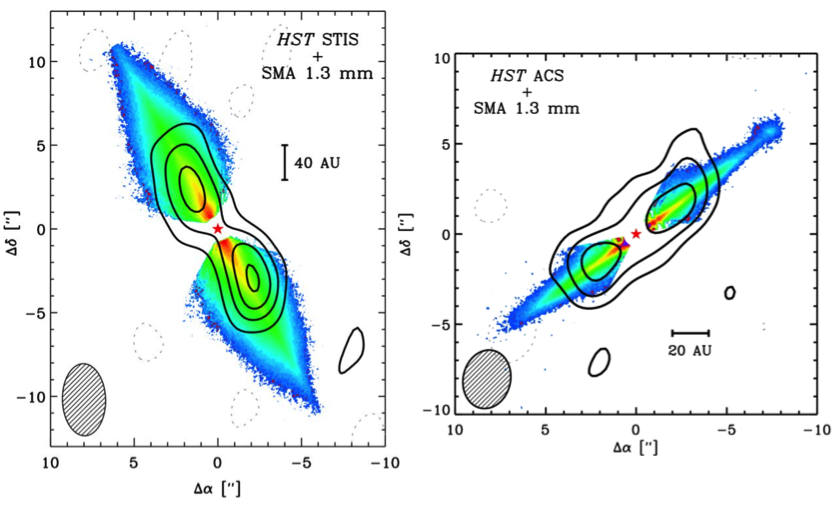Circumstellar Disks: Planetesimal belts:
relics of planet formation
Dust structures and gas from nearby young Kuiper belt analogs
After reaching an age of about 10 Myr, protoplanetary disks are believed to lose the vast majority of their gas and dust, leaving a planetary system with formed gas giants and rocky planet cores. It is just beyond this time at ages of 10s of Myr that we observe most planetesimal belts, rings of comets much like the Kuiper belt in our Solar System, but typically thousands of times more massive. With its high resolution capabilities and sensitivity to large angular structures, the SMA is well suited to image dust from collisions between planetesimals in these belts around nearby stars (see Fig. 5). These observations allowed us to pinpoint the belt’s location in many planetary systems (Wilner et al. 2011, 2012, MacGregor et al. 2015, Steele et al. 2016).
At the same time, the SMA was the first to both image the distribution of CO gas in a debris disk (Hughes et al. 2008), and to study the chemical composition of exocometary gas (Matrà et al. 2018).

Figure 05: Dust emission (contours) from the nearby, young planetesimal belts of beta Pictoris (left) and AU Mic (right), obtained with the SMA (Wilner et al. 2011, 2012). In the background are optical Hubble Space Telescope images of the same disks (Heap et al. 2000, Graham et al. 2007). The hatched ellipse shows the resolution of the observations
